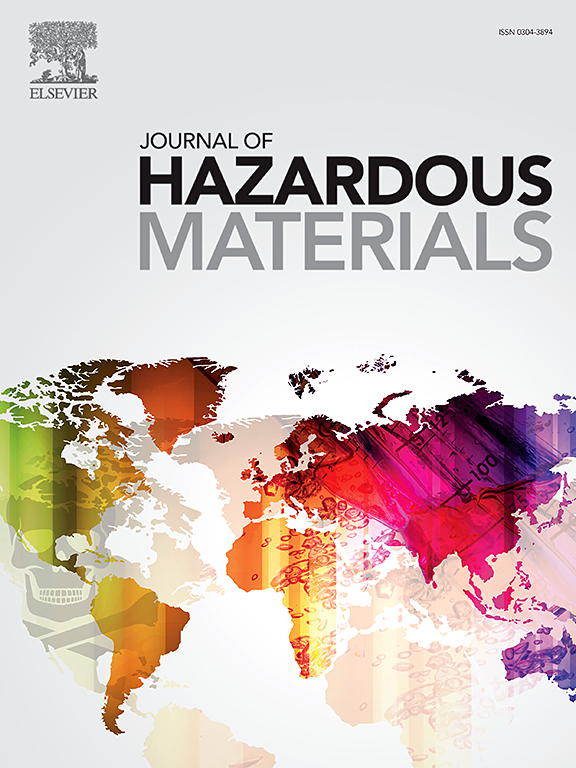Sub-soil biodegradable film mulching: a sustainable solution for enhancing winter wheat yield and shaping soil microbial communities in saline-alkali soils
IF 11.3
1区 环境科学与生态学
Q1 ENGINEERING, ENVIRONMENTAL
引用次数: 0
Abstract
Film mulching offers numerous benefits for enhancing crop yield in saline-alkali soils, yet the severe pollution caused by traditional polyethylene films and the lack of research on the impact of biodegradable films on microbial communities remain significant concerns. In this study, we compared the differences in bacterial and fungal communities among different mulching treatments, including polyethylene film (conventional mulching, PM; sub–soil film mulching, PMF) and biodegradable film (conventional mulching, BM; sub–soil film mulching, BMF). Film mulching can inhibit salinity, enhance moisture retention and nutrient uptake, thereby increasing the yield of winter wheat (Triticum aestivum L.). Among these, the sub–soil film mulching treatment demonstrated significant effectiveness, and BMF achieved a yield similar to that of PMF. Changes in soil environmental factors under different mulching treatments significantly influenced the microbial communities: BMF increased bacterial diversity and evenness, while PMF enriched fungal diversity. BMF exhibited higher abundance of Pyronemataceae and a more stable bacterial co-occurrence network. PMF, on the other hand, showed a reduced presence of pathogens and a more complex fungal network structure. Sub–soil film mulching regulated soil moisture, salinity, and nutrient status, leading to beneficial enrichment of the microbial community and promoting crop growth, ultimately enhancing crop yield. Our research provides theoretical insights into the reasons behind the increased yield observed with sub–soil film mulching and explores the potential of BMF as a substitute for PMF.

地下生物可降解地膜覆盖:盐碱地提高冬小麦产量和塑造土壤微生物群落的可持续解决方案
在盐碱地中,地膜覆盖对提高作物产量有诸多好处,但传统聚乙烯地膜对土壤造成的严重污染以及可生物降解地膜对微生物群落影响的研究不足,仍然是值得关注的问题。在本研究中,我们比较了不同覆盖处理的细菌和真菌群落的差异,包括聚乙烯薄膜(常规覆盖,PM;地下地膜覆盖(PMF)和生物可降解地膜(常规覆盖,BM;地膜覆盖(BMF)地膜覆盖可以抑制盐渍化,增强保墒和养分吸收,从而提高冬小麦产量。其中,地下覆膜处理效果显著,BMF与PMF产量相近。不同覆盖条件下土壤环境因子的变化对土壤微生物群落有显著影响:土壤覆盖增加了细菌多样性和均匀性,土壤覆盖增加了真菌多样性。BMF显示出更高的Pyronemataceae丰度和更稳定的细菌共生网络。另一方面,PMF显示出病原体的减少和更复杂的真菌网络结构。地膜覆盖调节土壤水分、盐分和养分状况,使微生物群落有益富集,促进作物生长,最终提高作物产量。我们的研究为地下地膜覆盖增产背后的原因提供了理论见解,并探索了BMF作为PMF替代品的潜力。
本文章由计算机程序翻译,如有差异,请以英文原文为准。
求助全文
约1分钟内获得全文
求助全文
来源期刊

Journal of Hazardous Materials
工程技术-工程:环境
CiteScore
25.40
自引率
5.90%
发文量
3059
审稿时长
58 days
期刊介绍:
The Journal of Hazardous Materials serves as a global platform for promoting cutting-edge research in the field of Environmental Science and Engineering. Our publication features a wide range of articles, including full-length research papers, review articles, and perspectives, with the aim of enhancing our understanding of the dangers and risks associated with various materials concerning public health and the environment. It is important to note that the term "environmental contaminants" refers specifically to substances that pose hazardous effects through contamination, while excluding those that do not have such impacts on the environment or human health. Moreover, we emphasize the distinction between wastes and hazardous materials in order to provide further clarity on the scope of the journal. We have a keen interest in exploring specific compounds and microbial agents that have adverse effects on the environment.
 求助内容:
求助内容: 应助结果提醒方式:
应助结果提醒方式:


